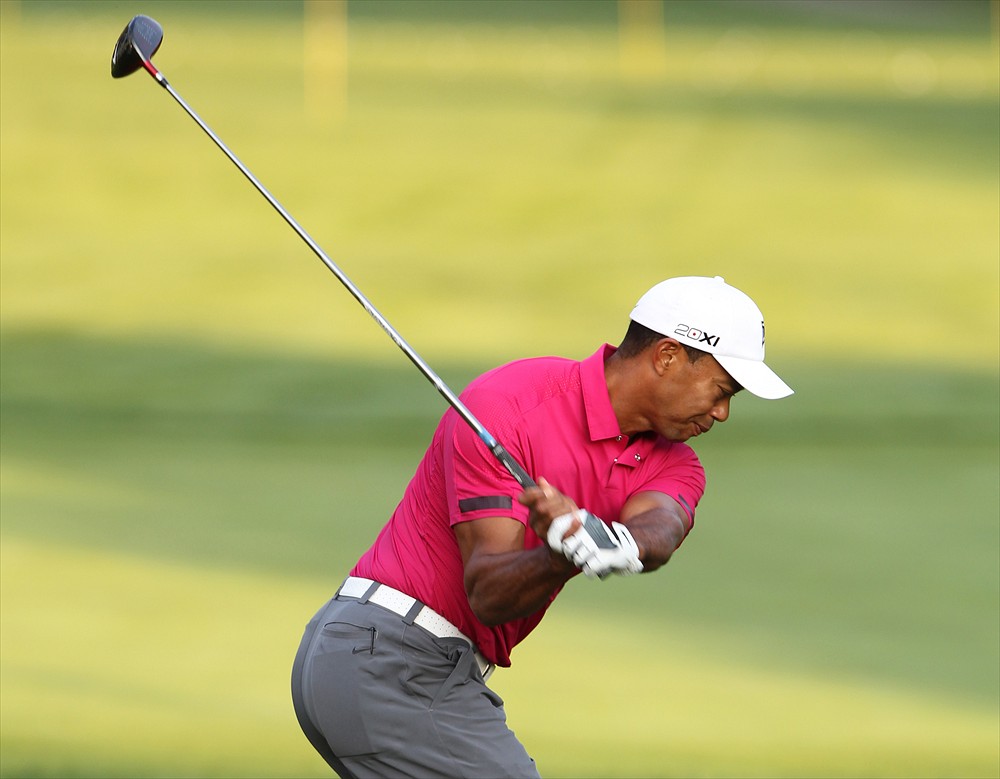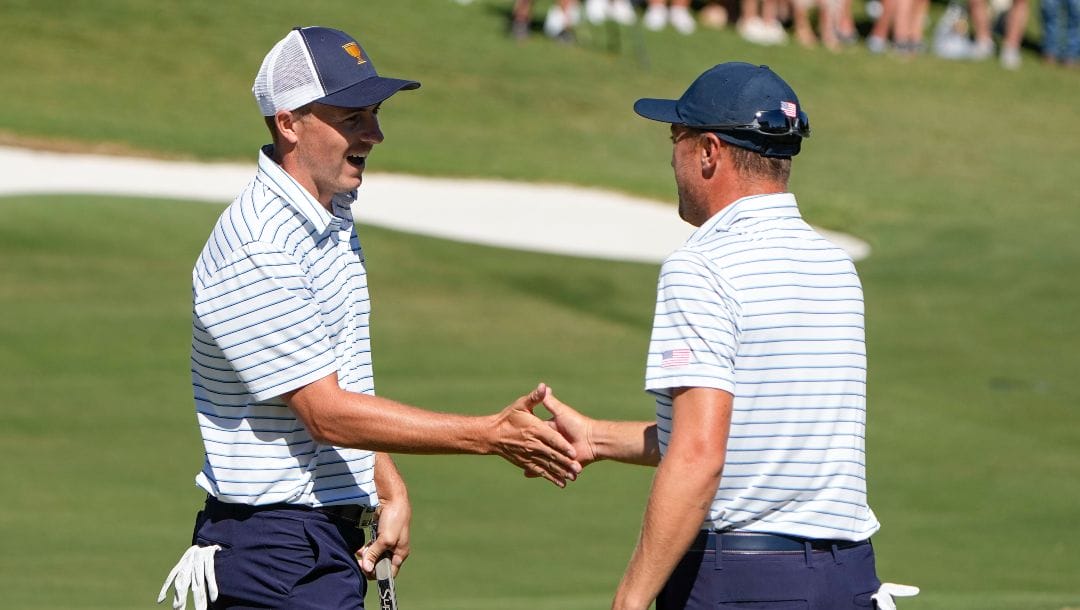Golf bet head to head tie push

Where a market does not have a Tie selection, bets will be pushed or dead heat. Golf. General Rules. In the event All Head-to-Head and Group Betting markets. golf bets and our up best golf betting tips Some shops are turning two–way markets, such as head-to-head golf matchups, into multiway markets. bet on: a tie. They'll take two of the drivers or golfers scheduled to compete and pit them in a head-to-head matchup. Bettors then make the call golf bet head to head tie push which one they think will. In this case, the winner of the playoff is the winner for betting purposes. The “Field” includes all players not offered by name. Match-Ups. Matchups for the.
Dead Heat Rules in Golf Betting, Explained: What Happens When Players Tie?
A dead heat refers to ties in golf bets like Top 5s, Top 10s and Top 20s, or other markets like 3-ball matchups and first-round leaders. Like if four players tie for 10th, you won't receive the full payout for a Top 10 bet at most sportsbooks. When players tie, your bet amount is usually cut by how many players are tied for those spots.
So part of your bet is a loser, and the remainder stands at the original odds. BetMGM is the only U. MGM does not pay out in full for first-round leader bets. The tricky part on the surface is that the "ties" often go through T-5 or T — you may have five players tied for third at , and then the next player on the leaderboard finishes in eighth.
Here are two examples from the Charles Schwab Challenge, covering several of those circumstances. That's because there were only three spots for four tied players in the Top 5. It was essentially one extra player occupying the position you needed to cash your bet. Tenth-place at the Charles Schwab also had dead-heat rules apply, but because there was only one spot available for four tied players, your stake would take an even bigger hit than in the Top 5 example.
One of the most common dead heats — or the one bettors care about the most — is first round leaders. As we've touched on, most books will take half your bet amount, and then apply the same odds to the remainder of your bet. It works the same for 3-ball matchups. In a matchup with two golfers, a tie will just result in a push and your money back.
Zalatoris and Varner tied. At most sportsbooks, your stake will be cut by the number of tied golfers relative to the spots available. Some others will cut the odds. And there could be a big difference in money depending on the bet. Golf bet head to head tie push MGM doesn't have dead-heat rules at all for bets like Top 20s, and will pay ties in full.
PointsBet cuts the odds. WagerTalk frequently offers free golf picks — check them out. The main wagering option for a golf tournament is choosing the tournament winner. All players in the tournament will be a wagering option for any tournament. This is an enticing part of placing wagers on golf as usually when customers are wagering on favorites, they aren't getting six-to-one or odds.
Placement position wagers are a great part of learning how to bet on golf effectively. These give customers the option to decide whether players will finish inside the top five, top or top Obviously, choosing one of these returns a smaller payout than picking a player to win the tournament outright, but golf tournament victories are hard to come by, as most players only win one-to-three tournaments per season.
This is also a good way to create an insurance for a customer's selection that will keep money in their account if they select a golfer who comes close but does not finish in first place. Top five, top and top selections will spit out plus odds for most golfers in the tournament, but a couple of the favorites may be minus odds in a top market selection.
An important thing to note when thinking about how to bet on golf for these markets is it is often that the dead-heat rule applies. If there are three golfers tied for fifth place, the McIlroy top five payout will be divided by three. As mentioned earlier, there aren't many sports routinely paying out , , or even or higher payouts for one day of action of a sport, but golf's first round leader market provides this.
Usually, long shots come in the form of season-long future bets where customers must wait an entire season to reap their rewards, but an FRL first round leader bet can get someone there in one day. Instead of selecting the winner of the golf tournament over the usual four-day span, this wager is selecting the golfer who is in first place after the first round is over.
Dead-heat rules almost always apply to this market, so the winning payout will be divided by how many players are tied for first place after the first round.  For example, if Jon Rahm went off at to lead after Round 1 and finishes in a three-way tie for first, the payout is There are a few factors to consider when trying to select a first-round leader winner.
For example, if Jon Rahm went off at to lead after Round 1 and finishes in a three-way tie for first, the payout is There are a few factors to consider when trying to select a first-round leader winner.
Although it may look daunting seeing almost 80 golfers in an event and having to pick a select few, customers can eliminate most golfers by paying attention to the weather, the style of golf course, the course conditions, and other player trends. For example, if the players teeing off from 7AM to 11AM play with little-to-no wind, and the afternoon groups may catch heavier wind and light rain, it could steer someone in the direction to choose a player from the early pairings.
Depending on the sportsbook, you may see slightly different 2-player matchups listed that can actually make a big impact. Generally, you want to bet the option where a tie results in refunded bets and not the one where the tie is its own bet. That's because the three-way option has more vig , which is advantageous for the sportsbook.
BetMGM lists two players with a tie bet available and two players with a tie resulting in a refund right next to each other. Here's another Masters example. For the two-way market where the tie is refunded, the sportsbook margin is 4. If you don't think the tie will come into play and want to bet your golfer at a slightly better price, go ahead. Just know that in the long run, it's disadvantageous because the sportsbook margin is higher.
Three-ball matchups feature three players, with each usually at plus-money. That's because it's harder to beat two other players than one, so the probabilities are spread out across the three players. Let's use a Round 1 3-ball example from the British Open. Sportsbooks use the actual tournament threesome pairings so that they can't get burned by the variables that come with different tee times, like weather or the course softening up later in the day.
Much higher than the two-way matchup. If two or all three players tie, dead heat rules will apply at most sportsbooks, meaning your winnings will be cut by the number of players who tied. There's a third type of matchup betting that features about five players who have roughly the same odds to win the tournament.
It's often called "group betting. The golfer with the best score out of these five will win the group. But the hold is even higher than 3-ball betting — this group at bet has a
Popular Pages
- Golf ranch betting game
- Isps handa australian open leaderboard
- Ryder cup golf betting
- Golf each way betting rules betfair
- How do you bet on golf
- Golf betting sites usa
- Tab we love to bet golf ad australia
- West linn wells fargo
- Best golf workplace betting pool form
- Tiger woods pga tour 12 mac download
- Disc golf sports betting
- British open odds full field
- Golf betting leader after round
- 2023 british open field
- Nassa bet in golf